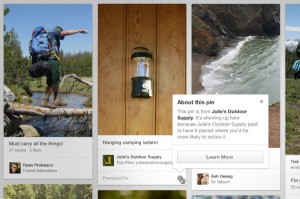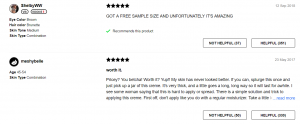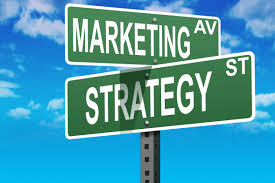How do you gain a competitive advantage with your email program? It’s all about differentiation and leveraging your data to drive results, says columnist Jose Cebrian.

I’ve worked with several large, well-known companies. Some push the virtual envelope with their email marketing, but let’s face it — many do not. Most, even.
There are a number of reasons for this lack of advancement in email strategies. Many marketers feel they simply don’t need to innovate — email is exceeding expectations, or it’s largely ignored by their leaders as a small part of their broader marketing strategy.
In other cases, people in charge of email just don’t have the time for experimentation; they’re driven to get a campaign out today, tomorrow, every day.
Sometimes, one major player in an industry will basically emulate the biggest competitor that’s finding success. Instead of seeking a competitive advantage, they settle for parity.
Therein lies the opportunity. The reality is that when people see your email program, it’s not the symbols or the video or the fact that you show 18 products versus six that makes you stand out.
That is all superficial. Those elements don’t create a differentiated email program. Differentiation is achieved based on what you can’t see.
What Makes An Email Program Great?
If you’ve been to a business conference, you’ve probably heard someone repeat Ernest Hemingway’s “Iceberg Theory.” The premise is that if you know a topic very well, and you’re telling your story to the right audience, you don’t have to spell everything out.
In other words, your writing is like an iceberg: it looks simple, but much of it is unseen. Hemingway also makes the distinction between those who leave out information because they don’t know it and those who omit information because they know their reader will feel it.
It’s an excellent analogy to what makes an email program great. On the surface, it may look simple and good. But the stuff under the surface is what makes it powerful.
What’s above the surface? It’s the regular campaign and cadence of emails you send — the welcome stream, a responsive design, a link to a store locator, a retargeting tag.
Looking at your email program from the outside, I can surmise some things from your eDataSource or Return Path Inbox Insights tools or from looking at the code of your email to understand what tags and partners you’re using.
The elements that lie above the water line (what people can see) are important, but they’re not the competitive differentiator for your email program, because all of those things can be easily copied.
What makes your email program different is what’s under the surface — specifically, what goes into the creative and who gets selected for the communication; in other words, why 18 products are shown versus six.
Look at how a banner gets served. Most people think that when they see a banner, it’s just advertising that gets served. But in actuality, there is a very complex, technical fight for that impression, one based on context, derived location, purchase intent, anonymous demographics, known data and numerous other factors. Many entities are bidding on that impression in sub-second time.
What a person sees belies the complexity of what is happening. That’s how your email program needs to work.
Getting Below The Surface: Leveraged Data

So what’s below the surface? Leveraged data. No one else can see it or know how it’s being applied.
It’s the part of your email program that can’t be replicated by a competitor. Your email programs may look very simple to an observer, because they don’t know you’ve done things like send the email at the most optimal time for that specific individual to open.
You’ve included cross-sell products selected via a propensity model leveraging a customer’s prior purchases and Web interactions. You’ve added real-time content that will alter your message based on the customer’s proximity to a physical store.
What an outsider sees is that you used the customer’s first name.
I hope you noted that I used the term “leveraged data,” rather than just “data” in the iceberg example. The data alone is a very small part of the iceberg that’s below the surface. Where the true mass, the power, comes from is what you’re doing with that data.
What You Can Do With Leveraged Data
• Drive Creative. I am tired of the responsive vs. non-responsive vs. mobile-friendly discussion in email (although it is mostly over). In short: Responsive is good for the customer experience, and it may be worth it for from a direct-attribution ROI perspective.
But what I mean by creative is what people don’t realize they’re looking at — the real work in creative. How do you come up with the design and the actual words and layout that people respond to? That is no happenstance occurrence. At least it shouldn’t be.
Your creative should take into account what you want the person to do (what’s the action?), their state (where are they in the lifecycle, what do we know about them, and what motivates people around your brand?), and how they complete a transaction (Web, phone, person to person).
Some big companies relegate email creative to freelancers because the want it cheap and easy. Freelancers can be great, but unless they are highly engaged in your business and your customer research, they may be less than optimal.
Plus, as crazy as it may sound, in many creative executions, the objective is to look better, not perform better.
• Align Segmentation And Creative. Segmentation is a term that people throw around to mean targeting. In email, people often tighten segmentation to improve open rate or click rate — variables that don’t directly improve business results.
Differentiating your email program requires that you not only market to small(er) pockets of your customer base but also match the creative to the segment, the medium and the time.
That’s not so easy to do, and it’s not something anyone can see in an email. Of course, a focus group of one means nothing.
• Quick Reaction And Implementation. The faster you act on data, the better the customer experience (and the less likely your competitors will know how you do it). This is more difficult for some companies than others.
Data speed is how fast your email program can act (change a message to an individual), based on actions taken by that individual. This is no simple task, as an action may have occurred via customer service agent, store, website, email, SMS or field rep.
By consuming and acting on these data in near real time, you’re able to create a competitive advantage. When you send a travel email, that email should “know” that person booked just before you sent.
• Win More Small Campaigns. Time and again, we see that smaller campaigns, sent to a smaller, more targeted segment, are producing greater results — not just higher percentage returns. I don’t want to call them “micro-segments” because I think that can disguise their size.
But the point is that there are groups of people in your database that warrant their own messages. It might be because they expressed interest in something specific or they took a specific action, or a mix of the two; but this is where the true marketing happens.
• Nail The Timing. Many people don’t think about it. Or they do time-of-day tests, with an arbitrary control send time (e.g., 4:00 a.m.). So unless your customers are all in the same time zone, your results will mean very little on a larger scale.
General tests won’t get you where you need to go. You need to segment by location and general open time for the individual. There are tools to help you with this, such as AudiencePoint and your email service provider’s (ESP’s) send-time optimization feature, if it has one.
• Leverage Email Outside Of Email. It wasn’t too long ago that an email address was just another field in a marketing database that was probably superseded in importance by a physical address. But now, email address is an asset that can be matched against many online properties in a variety of ways (as long as your privacy policy allows) to extend reach and frequency.
You can create differentiation in your email program by extending what you know about each email address to continually improve programs on other channels, such as addressable social and addressable display.
I encourage you to take a thoughtful look at your own email program. How far below the surface does it go?
Do you have a budget for innovation? Do you have a person or team focused on building and improving smaller automated campaigns without being caught up in the noise of the day-to-day business of manual campaigns?
Are there data stores you can leverage inside your organization, so you can act on that data at a faster rate?
These are the elements that will ultimately differentiate your program. Email can no longer be a siloed channel. It must be fed by — and feed — all the parts of your business, including service and other marketing activities.
Some opinions expressed in this article may be those of a guest author and not necessarily Marketing Land. Staff authors are listed here.
(Some images used under license from Shutterstock.com.)
Marketing Land – Internet Marketing News, Strategies & Tips
(112)








